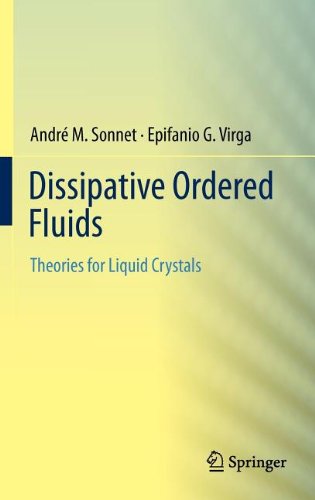

Most ebook files are in PDF format, so you can easily read them using various software such as Foxit Reader or directly on the Google Chrome browser.
Some ebook files are released by publishers in other formats such as .awz, .mobi, .epub, .fb2, etc. You may need to install specific software to read these formats on mobile/PC, such as Calibre.
Please read the tutorial at this link: https://ebookbell.com/faq
We offer FREE conversion to the popular formats you request; however, this may take some time. Therefore, right after payment, please email us, and we will try to provide the service as quickly as possible.
For some exceptional file formats or broken links (if any), please refrain from opening any disputes. Instead, email us first, and we will try to assist within a maximum of 6 hours.
EbookBell Team

4.1
60 reviewsThis is a book on the dissipative dynamics of ordered fluids,
with a particular focus on liquid crystals. It covers a whole
range of different theories, mainly concerned with nematic liquid
crystals in both their chiral and nonchiral variants. The authors
begin by giving a detailed account of the molecular origins of
orientational order in fluids. They then go on to develop a general
framework in which continuum theories for ordered fluids can be phrased.
Within this unified setting, they cover both well-established classical theories and new ones with aspects that are not yet completely settled. The book treats a wide range of hydrodynamic theories for liquid crystals, from the original 1960s works by Ericksen and Leslie to new, fast-developing ideas of liquid crystal science. The final chapter is devoted to nematoacoustics and its applications. Old experiments on the propagation of ultrasound waves in nematic liquid crystals are interpreted and explained
in the light of a new theory developed within the general theoretical infrastructure proposed in the body of the book.
This book is intended both for graduate students and professional
scholars in mathematics, physics, and engineering of advanced
materials. It delivers a solid framework for liquid crystal
hydrodynamics and shows the unifying concepts at the basis of the
classical theories. It illustrates how these concepts can also be
applied to a wide variety of modern topics.
Andre M. Sonnet is in the Department of Mathematics and Statistics at the University of Strathclyde, Glasgow (Scotland) and Epifanio G.
Virga is in the Department of Mathematics at the University of Pavia (Italy). They have a long history of working together in liquid crystal science and have contributed, in particular, to the theories of
defects and biaxial nematics.